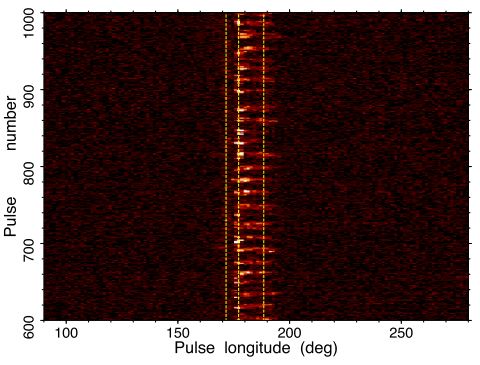

Periodic mode changing in PSR J1048-5832
It is now known that the emission from radio pulsars can vary over a wide range of time-scales. Although most of these emission changes are largely considered to be random processes, some changes are reported to show periodicities. Sub-pulse drifting and periodic nulling are the well-known periodic emission variations. By analyzing the data acquired from the Parkes 64-m radio telescope at 1369 MHz, researchers from the XAO pulsar group reported on the phase-stationary non-drift amplitude modulation observed in PSR J1048-5832.
This study revealed that the central and trailing components of the pulse profile of this pulsar switch between a strong mode and a weak mode periodically. However, the leading component remains unchanged. Polarization properties of the strong and weak modes are investigated. Considering the similarity to mode changing, the researchers argued that the periodic amplitude modulation in PSR J1048-5832 is periodic mode changing. The fluctuation spectral analysis showed that the modulation period is very short (~ 2.1 s). It was found that this periodic amplitude modulation is hard to explain by existing models that account for the periodic phenomena in pulsars like sub-pulse drifting. It seems to require emission-state changing in the magnetospheric field currents with the same periodicity.

Figure 1. A single-pulse stack of 400 successive pulses. The three vertical dashed lines show the longitudes of the leading, central, and trailing pulse peaks of the mean pulse profile, respectively.
Attachment Download: